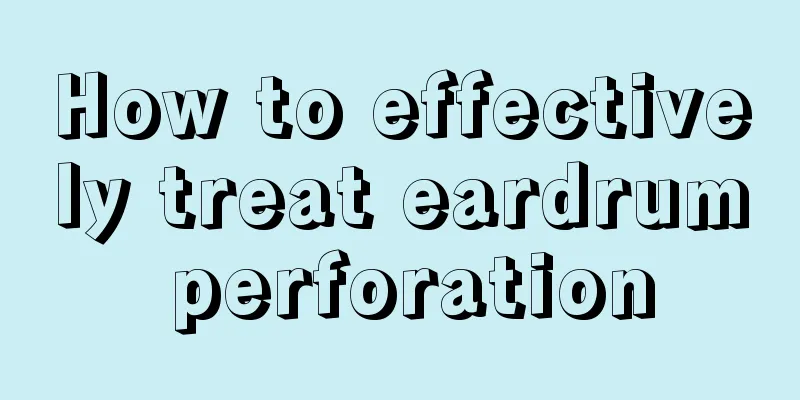How to effectively treat eardrum perforation

|
Eardrum perforation is very common in clinical practice, and this situation is usually caused by trauma. Regarding the treatment of eardrum perforation, the treatment method can be determined based on the severity. The more common ones are medication and surgery, but medication is prone to recurrence. 1. Drug treatment: General drug therapy mainly aims to reduce the size of the perforation through antibacterial, pus drainage and swelling reduction. However, it is difficult to achieve the healing of the perforation with drug treatment alone, and it is very easy to relapse. 2. Traditional surgical treatment requires making an incision inside or behind the ear and taking autologous tissue and implanting it in the eardrum. Patients using this treatment are very prone to postoperative bleeding and are also prone to sequelae. 3. If the perforation is caused by trauma and there is no infection, you can plug the ear canal with a sterilized dry cotton ball and use antibiotics to prevent infection. No local ear drops are needed; 4. If there is pus discharge from the middle ear, anti-inflammatory treatment should be given. In the acute stage, systemic antibiotics should be used, and local chloramphenicol ear drops or ofloxacin ear drops should be used for ear baths. If there is pus discharge from the middle ear, anti-inflammatory treatment should be given. In the acute stage, oral antibiotics should be used, and local 2.5% chloramphenicol ear drops or 0.3% ofloxacin ear drops should be used for ear baths. 5. If cholesteatoma is formed, surgical treatment is required as soon as possible. 6. There are two methods of repairing the eardrum: surgery and cauterization: The surgical method is to make an incision inside or behind the ear, and implant the autologous tissue in the position of the eardrum. This method is suitable for patients with large perforation of the eardrum or ossicular defects, interruptions or early cholesteatoma. The cauterization method involves applying a special solution to the edge of the perforated eardrum to stimulate the growth of the eardrum. This method does not require surgery, is simple and easy, and can be performed in an outpatient clinic. Each session lasts 5 to 10 minutes and is basically painless. However, follow-up visits and re-cauterization are required every 7 to 10 days until the eardrum heals. |
<<: What are the symptoms of binocular refractive error?
>>: What are the ways to prevent refractive error?
Recommend
The benefits of drinking olives soaked in water
Olive is a fruit native to Fujian Province in my ...
Laparoscopic radical gastrectomy price
We usually feel terrible when we hear someone has...
Steatocystoma multiplex
Multiple steatocystoma may sound a little strange...
What are the differences between mental illness and neurosis?
Mental illness is an increasingly serious problem...
Common treatments for cervical cancer
When it comes to the treatment of cervical cancer...
The efficacy of oyster shells
Seafood is very famous in coastal areas, and oyst...
What are the dangers of having a full-cut double eyelid?
Double eyelids are a very popular eye shape in li...
What is deionized water
Speaking of deionized water, I believe many peopl...
Is it good to be pregnant with skin cancer
When it comes to cancer, everyone is in a panic. ...
What are the benefits of soaking your feet in ginger slices
When many people can't sleep in winter, they ...
How is herpes zoster oticus treated?
Speaking of herpes zoster oticus, I believe every...
How to correct vertically growing front teeth
The phenomenon of front teeth growing vertically ...
Colon cancer can usually be seen from the abdominal mass
Colon cancer can usually be seen from the abdomin...
What are the symptoms of laryngeal cancer before death
What are the symptoms before death from laryngeal...
Early symptom check for esophageal cancer
Esophageal cancer is a type of cancer that poses ...









